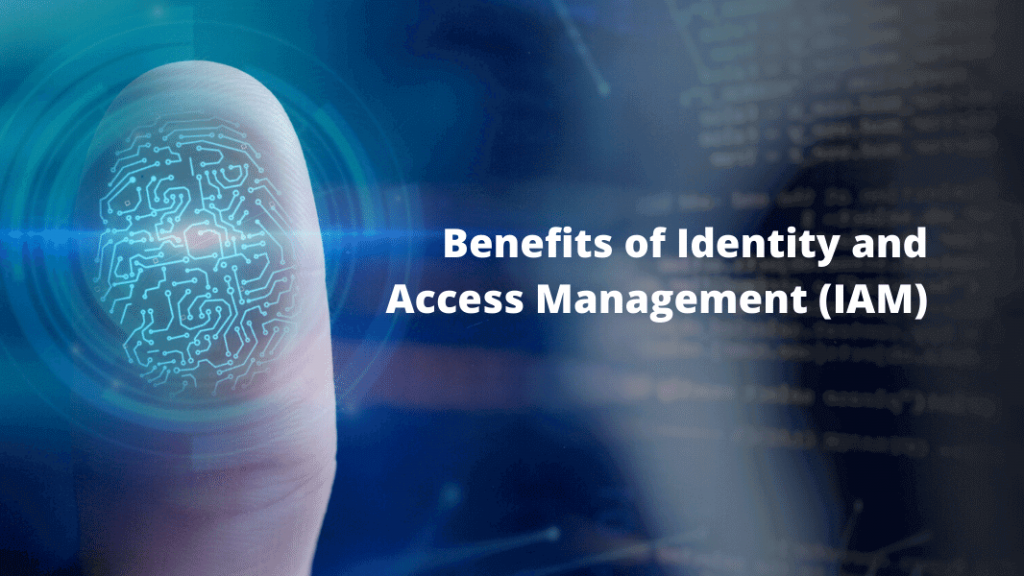Last Updated on November 9, 2022

IAM is a term used in business that refers to identity and access management. This is a way to provide digital identities for employees for better productivity and development. IAM can help businesses by offering them the ability to manage these identities to keep the business working like clockwork. This includes tracking business activities, deploying access policies, and policing systems to ensure each employee has the right technology as well as the right access authority to use the best technology resources.
There are vital reasons why identity and access management will expand a business, improve customer service, and enhance all areas of business security, strength, and stability.
What is IAM technology?
This technology consolidates distributed digital identities and federates access across heterogeneous systems. It can be used within many circumstances, including internal users systems, partners, and Customer Identity and Access Management (CIAM). It also relates to the security of the business which boasts multiple benefits to this system. They primarily affect the employees but also the customers of the business. IAM deployment typically helps to facilitate:
- Better customer and user experience.
- Reduced risk of exposure and improved safety.
- Improved business intelligence through insights.
- Better control over users and data.
- Reduce business administration costs.
- Reduce development complexity in digital transformation initiatives.

What are the Important Components of IAM?
There are many features associated with identity and access management. The main components include identity and access as its main feature. A business can use IAM to authenticate and manage access between people. It can grant access, authorize new staff members, and implement password management.
Identification: The largest component of identity and access management. This software or hardware identifies a user with their specific credentials. This is used against the database to grant the necessary access. They are often flexible with a strong and secure username and password solutions. These passwords grant access on a low or high level depending on various factors. Often you will find the identity component to be managed through a Content Management System (CMS).
Authentication/Authorization: This is when a user must prove to the system that they are who they say they are. This is a way to access and authorize each team member and it is often solidified with simple usernames, passwords, and security tokens as an added security layer. It may deal with queries relating to access and possibly look at biometric features which all align with the components of IAM. This is managed on a vast database and whilst this remains one of the most complex features of IAM, it is also one of the most beneficial in terms of security.
Reporting: Reporting is a vital component of IAM because this allows a detailed analysis of multiple areas. Firstly, it will give companies access to information relating to log-in time, systems access, data exporting, and more. This will allow business owners or managers to monitor the working habits of staff and ensure that they are logging in and out at set times and are following the company’s regulations properly.
What is IAM today?
“Identity and Access Management”, or IAM, refers to a company’s internal mechanisms responsible for administering employee user accounts on the company’s network. Resources related to the company’s network and access rights to systems and applications by users are also affected. We know today that this is a vital step because of the plethora of security issues that workers face. When remote working kicked off during the pandemic, many workers were faced with working from home or in environments where others may be around. Therefore, it was important that they could log in to systems safely and gain access to the resources needed for their work without hassles.
IAM is an authentication system that makes it possible to verify that each user has all the necessary authorizations before using the network. IAM software allows the user to simplify the user management process, such as password management or software dedicated to accounting management. For IAM authentication, the end-user must prove their identity at the network level. The traditional authentication technique consists of associating the username with a password. The other method consists in reconciling physical support and memorization, via a mobile phone, a badge, fingerprints, etc.
These methods are still in infantile stages for many companies, although it is known that fingerprint ID and eye scanning are most likely coming soon to high-tech companies. The authorization/access rights aspect is also essential in identity access management. Authorization delimits through which resources a user accesses the network. These resources include applications, shares, access terminals, etc.

7 key benefits of IAM for business
There is a multitude of benefits relating to identity and access management solutions for business. Seven key points listed below highlight specific areas that make this a worthy investment.
1. Saving time on administration
Administration costs can easily pile up. An effective and easy solution to allow users into their workspace and databases easily will save time if other issues occur. Now, IAM allows for a seamless continuation of work. An easy-to-manage flexible administration allows a company to create privileged groups, edit access settings, and ease user registration processes. Further to this, a business can begin establishing application processes, user approval, and access customization according to needs. Once these are fully implemented, they are set and ready to go, which enhances efficiency in the workplace.
2. Better security
Identity access management also provides better security through careful control over access rights related to user accounts and applications. The integration of authentication systems and the updating of rights for each user are also monitored. Adapting access to the digital identity established for the user with flexibility allows administrators to monitor the processes and, in the event of security flaws, to be able to identify their origin. It is important to bear in mind that the search for IAM solutions, rather than contributing to the protection of personal and corporate data existing in the business network, is also strategic for customers. This allows a business to be exceptionally productive every day.
3. Reduces service costs
Essentially any business that invests in identity and access management is investing in itself. Whilst many are wary of upfront costs, it is a type of insurance for your company that cannot be found elsewhere. You have a system that is controlled through the main platform. This itself saves costs on outsourcing or spending money on outdated and broken systems that require extra maintenance. Secondly, eliminating costs is also a huge benefit. Due to IAM’s security, you will likely be able to avoid any damaging pitfalls that may be bestowed upon you if a colleague should either: commit fraud, be non-compliant, or violate regulations. If there is a breach in information security, your company could be liable to pay out thousands (if not millions) of dollars in damages, as well as lose reputation and customers.

4. Good company security
IAM software helps companies to reduce service costs, while simplifying authentication mechanisms. It also provides complete management, particularly in terms of identities and access to internal networks. Companies have the option to set up two-step verification and solid password policies. These allow for Multi-factor Authentication (MFA), which means that you are constantly upgrading your security. These features allow you to enforce your security strategy. The strength of passwords can be set to very strong. Also, you will find that you can enforce policies easier and expire sessions at set times if this is necessary for your organization. This will allow for further security because you will know that users are not leaving data unattended. It gives all parties peace of mind and eliminates the worry of cyber threats.
5. Simplicity across all areas
The security expected from IAM relies on simple user provisioning and account configuration procedures. Reducing the time and steps required to register users and access allows for a more direct workflow. This ensures greater security, since it reduces the possibility of errors and abuses, as well as allows the automation of a greater part of the processes. Simplicity should also be ensured in editing guidelines for user access by administrators, providing more control.
6. Possibility to monitor access
Management systems must ensure that digital identity controls and accesses are carried out to balance the evaluations that administrators must carry out by automating processes and maintaining the agility of decisions. One of the main ways to achieve this agility and automation without losing the ability to monitor access is to associate their roles with positions and hierarchies within the company. We can also use as a parameter, the business units, the regions where they are located and other elements to establish the relevance of access to certain information.
7. Great information sharing
Often, information can become lost or confused among larger groups of people. Data may be difficult to obtain and there may be difficulties sharing files. With IAM, there is a great possibility of sharing. Information sharing is simple because these excellent frameworks provide a common shared platform. It is easy to find files and share them with ease, knowing that you are connecting with your colleagues or customers in a safe and respected way. This also adds value to the company, because it instills trust. Therefore the choice to switch to IAM is a vital step to any business.

How IAM plays a key role in MDM
Many companies today use mobile devices and have implemented Mobile Device Management (MDM) to help simplify the process of managing device fleets and streamline operations. This is a key element of business and quite simply, a necessity. We know that businesses set their sights on improving business constantly, and with more workers becoming autonomous in their day-to-day work schedules, mobile devices are vital, and so is the management for mobile devices and potential risks. Identity and access management is a vital tool to ensure sensitive data stored in mobile devices are kept safely and unreachable from unauthorized users.
1. The basic IAM features needed in MDM: It is known that IAM systems can and will be used through these devices. The modern world is volatile and ever-growing and it is known that this may even lead to an increase in the adoption of biometric authentication systems through mobile devices. It also greatly assists in simplifying the process of managing device fleets, as well as streamlining operations. Essentially, you can keep track of every element of business.
2. The integration of IAM solutions and MDM for extensive capabilities: MDM allows you to control apps and users on the device and is a fundamental component of IAM. IAM can be run through multiple devices, and therefore, extending IAM to mobile devices is a must for any business. MDM is an important component of IAM because MDM allows security and the ability to provision apps to the device. MDM works in conjunction with IAM to help protect each device and therefore create security for the user. Access can be granted on the apps on the device and a seamless continuation of work can resume. With MDM solutions, you can tailor your needs. Do you need to block certain users or apps? Do you want to extend time on an app? Do you need to quickly disable a device? MDM will allow you to set these boundaries through an integrated IAM solution for a highly effective business strategy in this area.
IAM and MDM both play a pivotal role in each other. MDM can utilize identity and access management easily and give businesses control and security. Businesses that opt for this system will achieve advantages, but they must be aware that, in order not to have points vulnerable to attacks, biometric solutions must be compatible with any smartphone.
Conclusion
The modality of offering identity and access management in the form of software as a service allows any business to improve management. A business can greatly improve the way its business is operated, managed, and implemented. Users can work harmoniously on a platform that works and integrates all the modern-day technologies in one place with exceptional security. We are using more and more data in business, therefore a strong and secure system must be in place. MDM solutions work perfectly along with IAM and are an important step. Securing all platforms and devices will give you peace of mind, assurance of a strong business, and users and customers alike will feel happier with their workload and remove the burdens of technologies becoming slow, outdated, or difficult to operate.
[…] Identity and access management is a fundamental element in MDM policies, as no organization would like to see an uninvited guest accessing their back-end system without any hurdles. […]